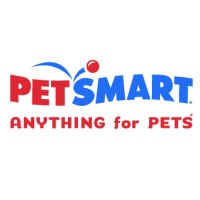PetSmart
19601 N. 27th Avenue, Phoenix, Arizona, 85027, US
Last Update: 2025-11-20
At PetSmart, we’ll do Anything for Pets. ❤️🐾 And the people who love them! Because we’re those people, too. Pets inspire and motivate us to bring our best selves to work each day. Our associates are devoted to ensuring that pets’ lives are happy and healthy. So, naturally, we’re devoted to ensuring that PetSmart is a happy and healthy workplace, too. Whether based in a store, salon, PetsHotel, distribution center, or at our home office, you’ll find yourself inspired and empowered to go further, reach higher, and make the most out of your #LifeAtPetSmart. As the largest specialty retailer in North America, we’re proud to employ approximately 50,000 associates across 1,660+ stores, seven distribution centers, and two home offices. Through our work with PetSmart Charities® and PetSmart Charities of Canada®, we’ve helped 11 million pets find their forever homes, donated over $500+ million in grants to make a difference, and earned the title of the leading funder for animal welfare. PetSmart takes data privacy very seriously, so please be aware that PetSmart will never ask for personal information, such as a driver’s license number or financial information before a candidate accepts an employment offer. Candidates will be asked to provide a social security number in the job application via PetSmart’s secured applicant tracking system, which can be accessed only via www.careers.petsmart.com. Candidates will never be asked to provide any of this information via e-mail.
NAICS: 43
NAICS Definition: Retail Trade
Employees: 28,938
Subsidiaries: 0







